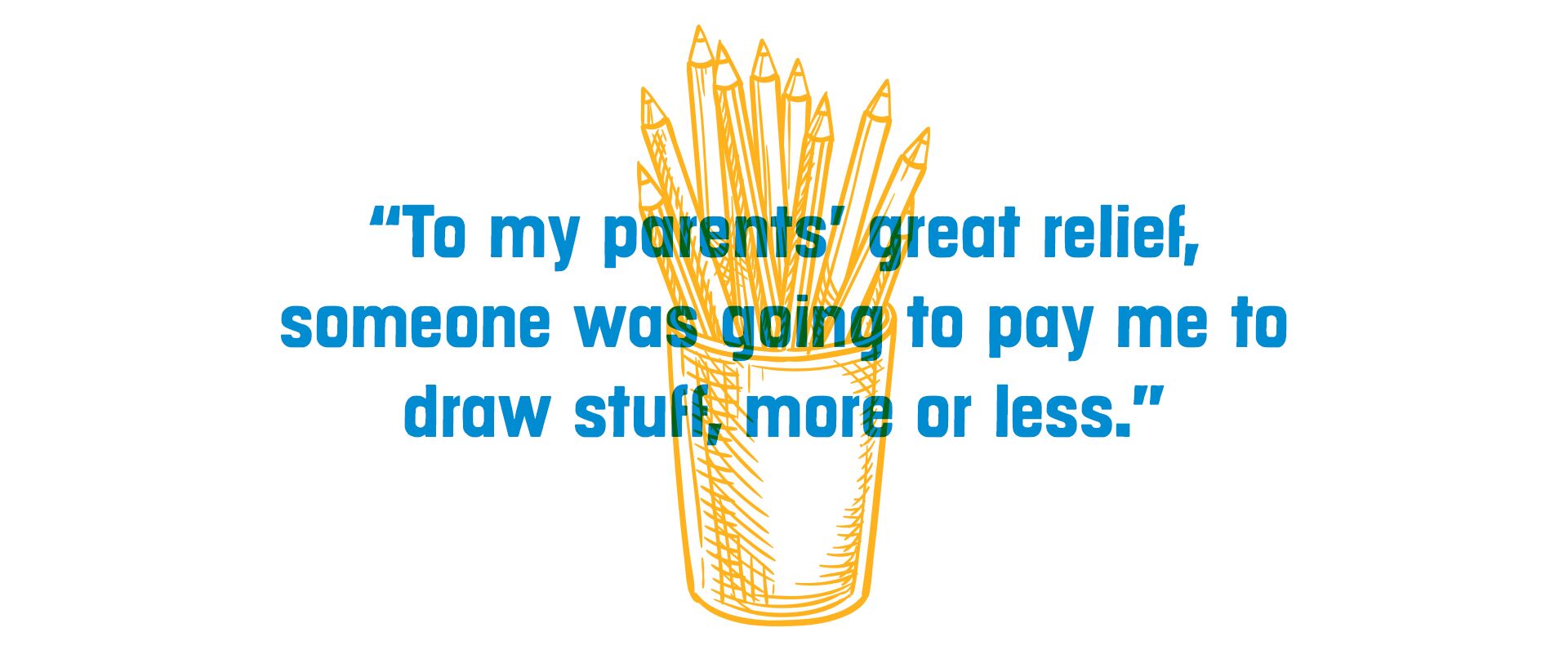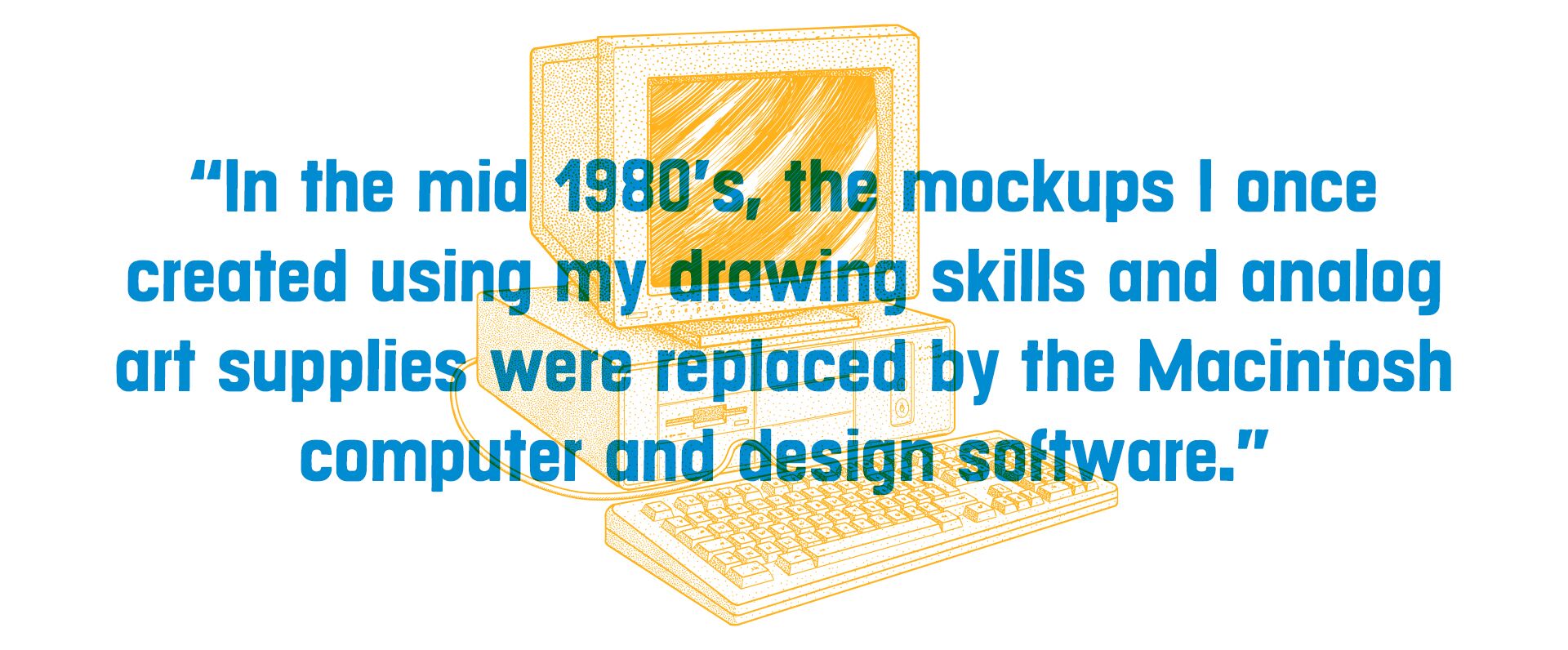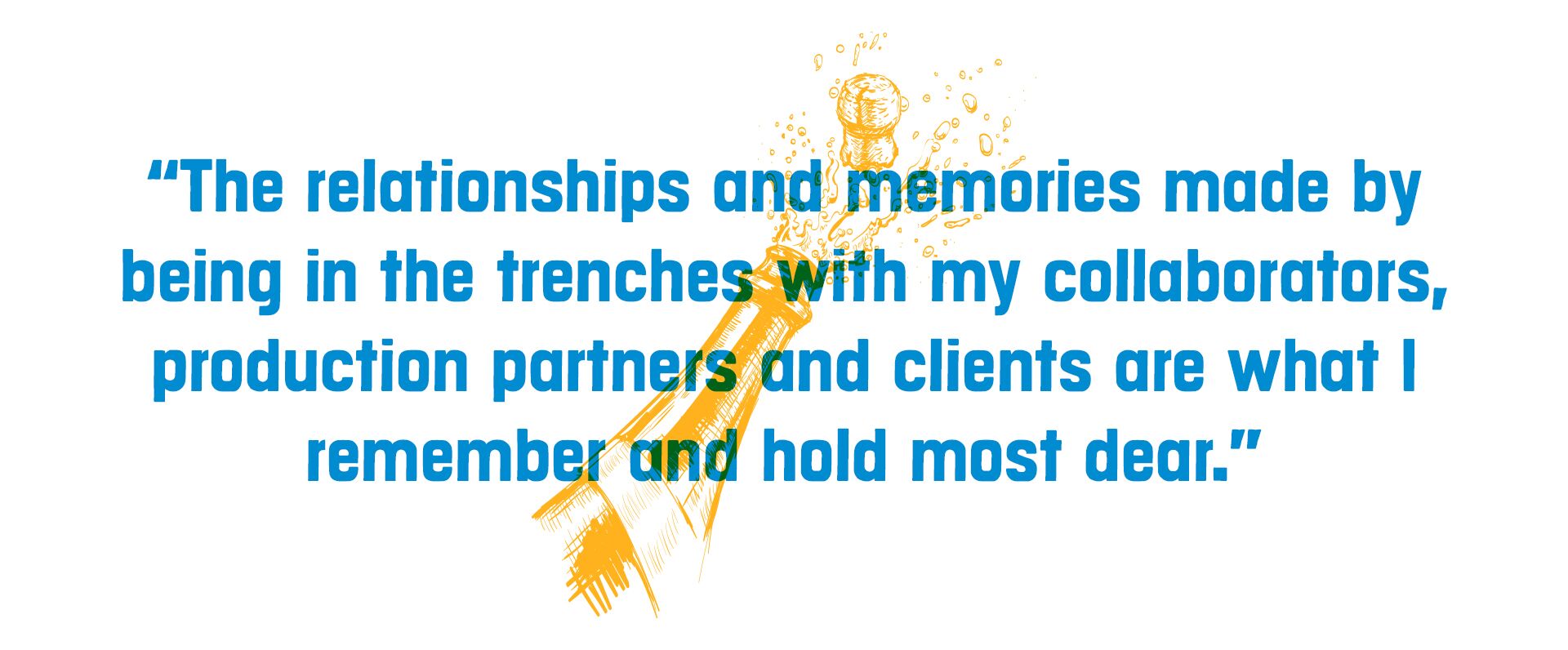The Future Meets The Past
By Lynn Ullman, Retired VP, Creative Director

In early summer, 1979, I started my first career job as an assistant art director at a large, regional ad agency in downtown St. Louis. On my first day, I joined the masses, moving in what seemed to me to be a very slow rat race along Highway Forty, driving a borrowed, yacht-sized Chevrolet Caprice.

Similar to the Sterling-Cooper agency portrayed in Mad Men, my non-fictional agency’s offices were thickly carpeted and filled with cigarette smoke, along with every kind of -ism you can imagine. On that day, I was given a set of used Design markers, a layout pad, a drawing board and a stack of timesheets to fill. To my parents’ great relief, someone was going to pay me to draw stuff, more or less. As it turned out, I would do this for the next forty-five years.
In those days, the writers and art directors worked as teams to make the advertising that America needed to keep the economy running, for God’s sake. We sketched ideas onto Bienfang AdArt layout paper and storyboard pads. Account executives wearing suits stuffed piles of these into oversized portfolio cases and carried them into corporate boardrooms where they would sell the shit out of various campaign concepts, along with their requisite media and production budgets.
From there, the ideas would be modified nearly to death, and eventually produced. Agency creatives would lead this effort by collaborating with independent photographers, illustrators, filmmakers, talent agents and countless other trades and craftsmen to bring their ideas to fruition. The result of all this effort appeared in print or ran on broadcast radio and TV. Media-wise it was a much simpler time.

In the mid to late 1980’s, the mockups I once created using my drawing skills and analog art supplies were replaced by the Macintosh computer and design software. The number of artists and trades needed to produce a concept got smaller, and some disappeared altogether. Much of what they did for us in studios, darkrooms and various print shops I now do myself on a laptop computer as part of the layout and design process.
Even so, as I filled out the last eight hours on my last timesheet at UPBrand, I was reminded more of how much hasn’t changed about this job (the dreaded timesheet being one of the holdouts). Except for marker layouts, business suits and sexism, things are really not that different. Inspiring someone to love a brand, or helping them understand a novel product or service is the job for all creative professionals, whether inadvertising, journalism or movie-making.
To do this well it is necessary to become emotionally vulnerable enough to connect with our creative collaborators, understand our client’s needs and struggles, and to see the world through the eyes of those we hope to persuade. We need just enough ego to have the audacity to create in the first place, but not so much that we lose the ability to understand someone else’s struggle.

The good news is, after forty-five years, I believe that the best part of my career was exactly those things. The relationships and memories made by being in the trenches with my collaborators, production partners and clients are what I remember and hold most dear.
On Leap Day this year I was humbled and surprised by a retirement party thrown by my UPBrand coworkers and wife, Michelle. As I reflect on all the overwhelming emotions of that evening, I am also struck by how formative and influential each person there was in helping me build my career and push out all that work.
Computers and software shaped the latter two-thirds of my career. Now the bots are moving us along even faster. Much of the image-making and wordsmithing will become even more automated than we thought possible. Agencies and advertisers now face multiple boss battles in an open world of atomized media platforms, shrinking screens and even smaller attention spans.
What’s left for us creatives to do is what we’ve been doing all along – uncovering insights into the human condition and playing that back to the world in surprising ways.
Seth Godin says of this business that “The future is about gigs and assets and art and an ever-shifting series of partnerships and projects.” That sounds like a world that is tailor-made for creatives and marketers. My advice? Be kind to each other, stay curious and never stop building new skills. You’ll be fine. It’ll be fine.
